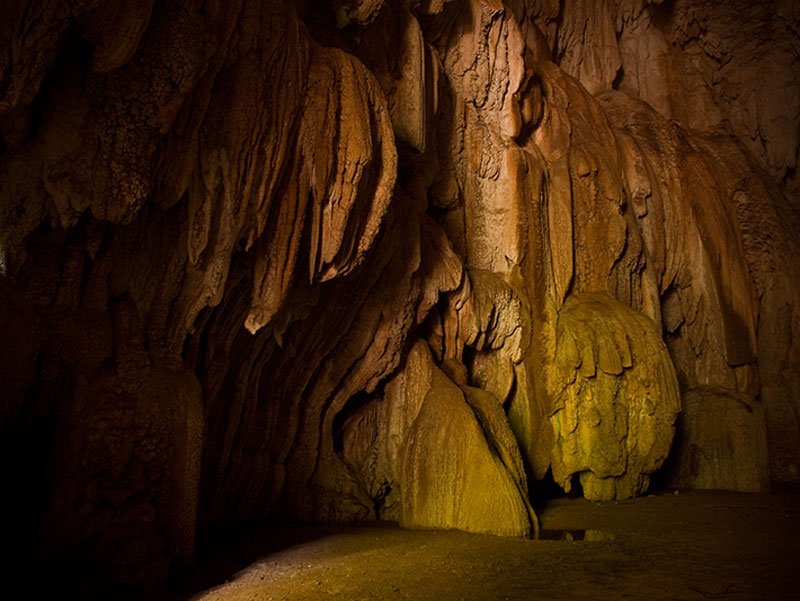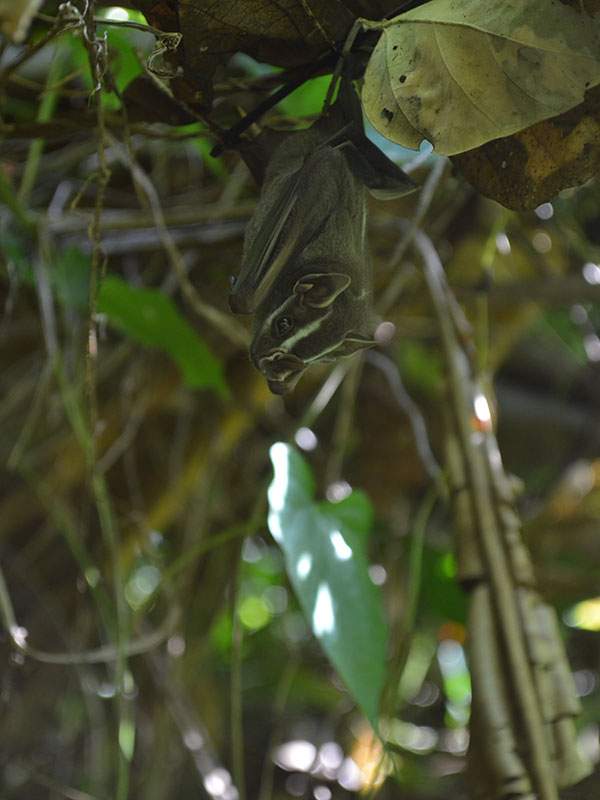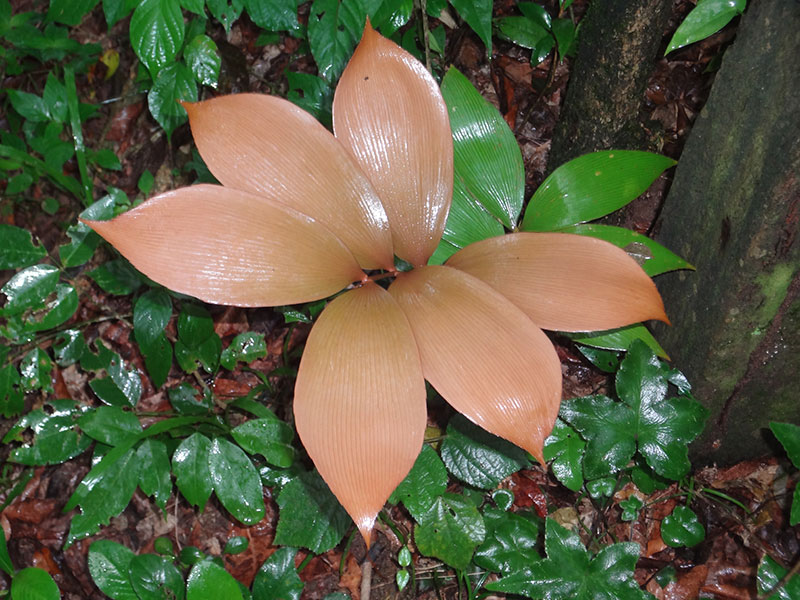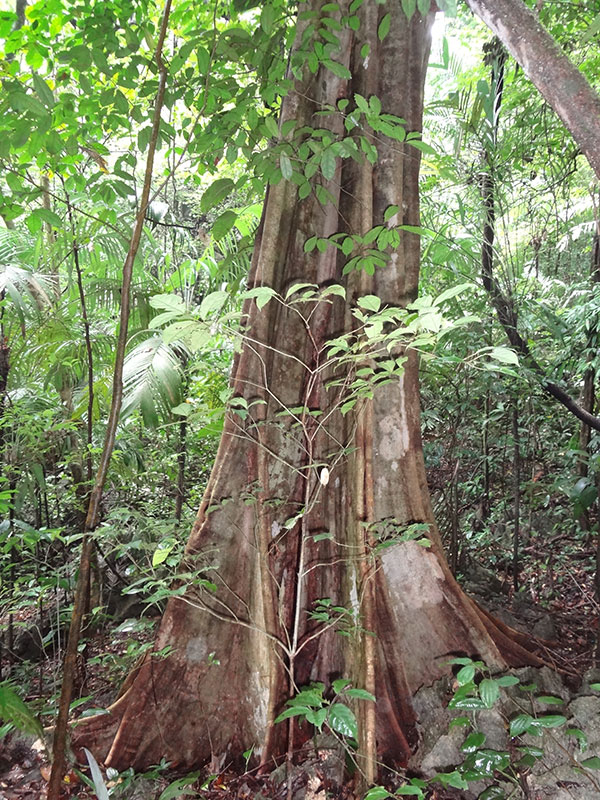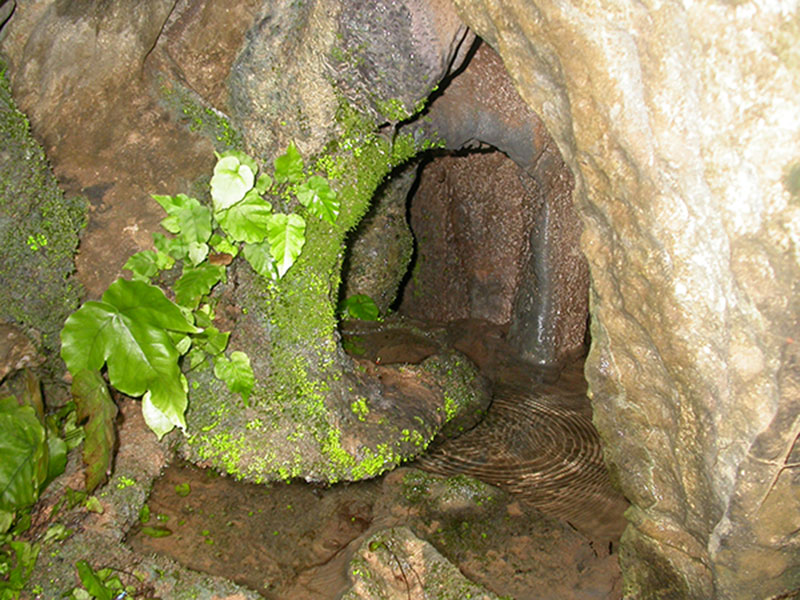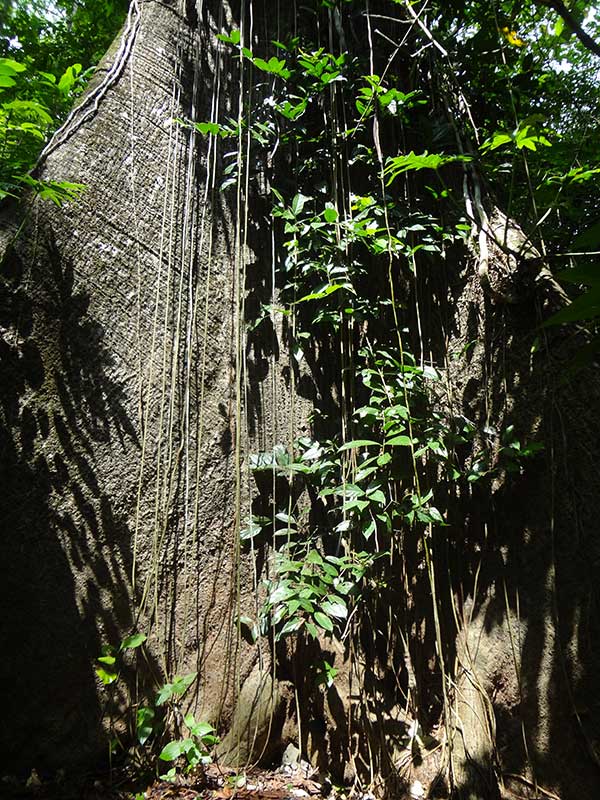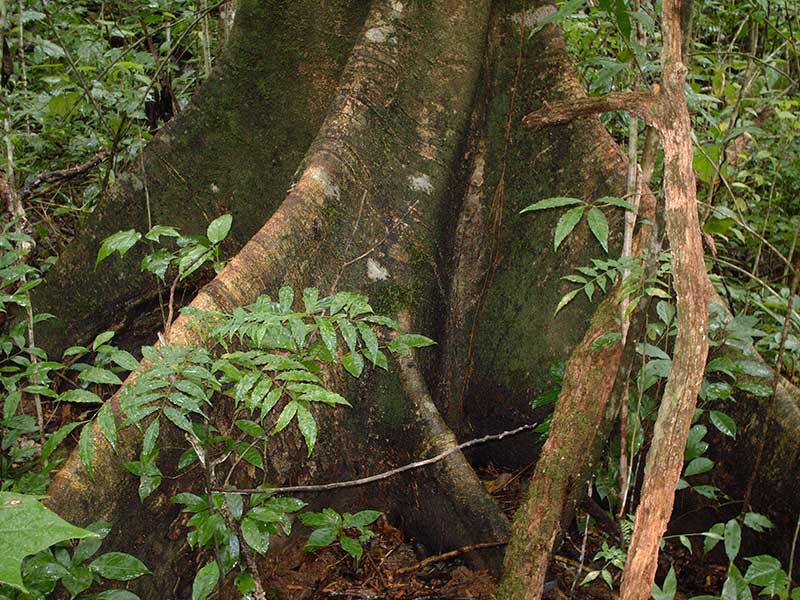What is a Rainforest?
The tropical rainforest is considered a biome. As the name says, tropical rainforests are located close to the Equator, between the Tropic of Cancer and the Tropic of Capricorn. The tropical rainforest is characterized for its high rainfall (at least 2000 mm each year) and constant warm temperature year round (average annual temperature of 25°C). The level of humidity and density of the vegetation give the ecosystem a unique water and nutrient cycle.
Approximately half of our planet’s terrestrial species (plants, animals, fungi, etc.) live divided between the many biomes on Earth, the other half of the species live in just one biome: The tropical rainforest. It is estimated that as many as 30 million species are found in tropical rainforests. The characteristic species are very tall deciduous trees, growing above 100 ft (33m) tall and many with large buttresses at their base.
Rainforests have four distinct layers: Emergent, upper canopy, understory and forest floor.
Emergent trees are those that grow above the rest of the upper canopy. These trees are spaced wide apart, and can be up to 240 feet tall with umbrella-shaped canopies. Because emergent trees are taller than the rest of the forest, they are the first to be exposed to drying winds, for this they tend to have small, pointed leaves. These giant trees can grow many meters in diameter, and have straight, smooth trunks with few branches. Their root system is very shallow, and to support their size they grow buttresses that can spread out to a distance of 30 feet.
The upper canopy of 60 to 130 foot trees allows light to be easily available at the top of this layer, but greatly reduced any light below it. Most of the rainforest’s animals live in the upper canopy. There is so much food available at this level that some animals never go down to the forest floor. The leaves have “drip spouts” that allows rain to run off. This keeps them dry and prevents mold and mildew from forming in the humid environment.
The understory, or lower canopy, consists of 60 foot trees. This layer is made up of the trunks of canopy trees, shrubs, plants and small trees. There is little air movement. As a result the humidity is constantly high. This level is in constant shade.
The forest floor is usually completely shaded, except where a canopy tree has fallen and created an opening. Most areas of the forest floor receive so little light that few smaller plants can grow there. As a result, a person can easily walk through most parts of a tropical rain forest.
Less than 1 % of the light that strikes the top of the forest penetrates to the forest floor. The top soil is very thin and of poor quality. A lot of litter falls to the ground where it is quickly broken down by decomposers like termites, earthworms and fungi. The heat and humidity further help to break down the litter. This organic matter is then just as quickly absorbed by the trees’ shallow roots (Blue planet biomes).
What is a Karst Rainforest?
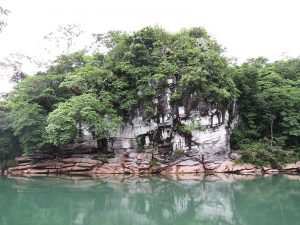 The term “Karst” refers to a specific landscape created by limestone outcroppings. This means that millions of years ago, the sea floor was raised and the sedimentary rock that formed the bottom of the ocean was now the land that the plants began to grow over.
The term “Karst” refers to a specific landscape created by limestone outcroppings. This means that millions of years ago, the sea floor was raised and the sedimentary rock that formed the bottom of the ocean was now the land that the plants began to grow over.
The rainforest eventually covered much of this limestone rock. However, very large portions of limestone are still above ground, reacting to the acidic organic leaf litter and abundant rainfall that eventually carves the rock into caves, boulders, cliffs and many other wonderful formations. This soil is considered highly permeable with rainwater disappearing rapidly into the groundwater below.
During the dry season, plants and animals much search for water captured in the treetops in the form of mist or travel far to find a rare spring of water, since water is not left on the surface, and even most streams dry up. A karst rainforest is a wonderful mix of lush green vegetation over white rock formations that delight the imagination and give many beautiful caverns to explore.
Threats
 As important and fantastic as rainforests are, they are the most endangered ecosystem. Due to their geographic location, the governments of the countries of which rainforests belong to, are not able to protect them against the demands of first world lifestyles. Huge industries, government policies and even small families are all responsible for the constant extermination of rainforests, their unique services, their species, their people and their history.
As important and fantastic as rainforests are, they are the most endangered ecosystem. Due to their geographic location, the governments of the countries of which rainforests belong to, are not able to protect them against the demands of first world lifestyles. Huge industries, government policies and even small families are all responsible for the constant extermination of rainforests, their unique services, their species, their people and their history.
Around the world, rainforests are destroyed for human profit making for a few. The main cause for rainforest deforestation is the misunderstanding that the rainforest is not productive in a way that benefits humans economically, and that we must clear the area to produce a source of income, such as non-native commercial crops and extensive cattle ranching. However, in most cases, this is simply a way for powerful groups to take advantage of local residents, encouraging them to embrace new ideas that may or may not be economically beneficial to the local families, but will certainly be economically beneficial to the governments or multinational companies that introduce these development plans.
In some areas, hydroelectric dams and mines including the search for oil and fracking activities are responsible for unimaginable and irreversible damage to tropical rainforests with very little or no interest in the well being or rights of the people who inhabit the area, their sources of shelter, food and water, not to mention the global services the rainforest provides and the millions of rainforest species that live nowhere else on Earth.
After the interests of those involved pass, a vast deserted landscape is left. Governments many times promote planting grass and soon, cattle ranching is the symbolic band aid that covers the scarred land, after the rainforest is clear cut. However, even grass grows without much nourishment when planted on poor, eroded soil, leaving cattle to grow slower and bring in a lower long term profit and sometimes no profit at all.
Beneficial Activities
One of our main priorities is promoting quality of life for all species, including our own. We look for creative ways to ensure that human development projects mean sustainable, harmonious projects in cooperation with other species, not their disappearance. A project that is good for the whole, is very surely good for us.
While many of our activities are done inside communities, some are performed directly amongst the giant trees inside the protected rainforest area. Some of our more permanent activities are:
1. Trail Construction
Our main priority is to find ways to motivate our species to find its “niche” and enjoy its place in nature once again, whether it be through scientific research, wildlife photography or just making new memories amongst the trees and birdsongs.
In order to facilitate walks and surveys in the rainforest, we have ongoing projects that support trail construction and maintenance of 8 km of trails through ancient trees and abundant limestone caves in two different ejidos for use by researchers, rangers and visitors of all ages. Trails include resting areas and educational signs enriched with photos and artwork from local artists.
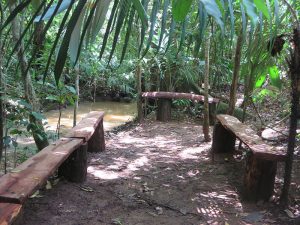
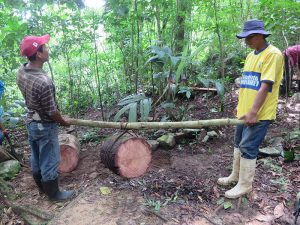
2. Rainforest Visits for Local Residents
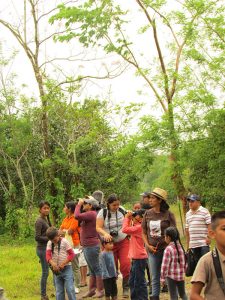 One day of every month, BiodiverCity invites local families in the ejido of 24 de Febrero to take a trip to rainforest and receive a guided tour to learn of the elements of a karst rainforest, eat a light lunch and enjoy the rainforest in a way most locals have never, recreationally.
One day of every month, BiodiverCity invites local families in the ejido of 24 de Febrero to take a trip to rainforest and receive a guided tour to learn of the elements of a karst rainforest, eat a light lunch and enjoy the rainforest in a way most locals have never, recreationally.
This practice has inspired more rainforest residents to value and preserve their lush ecosystem for future generations.
3. Restoration and enrichment
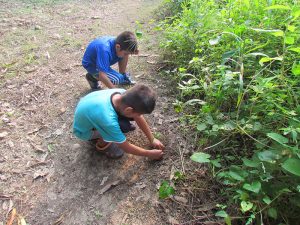 On a regular basis, tree and other priority plant species are planted throughout the rainforest.
On a regular basis, tree and other priority plant species are planted throughout the rainforest.
Some of these species include food trees for primates, endangered and endemic cycad palms and trees that offer fruit almost all year round to many species.
Other times, bare patches in the forest or in parcels of land around the forest are planted with a rich diversity of native tree saplings in order to encourage forest restoration.
4. Canopy and cave exploration
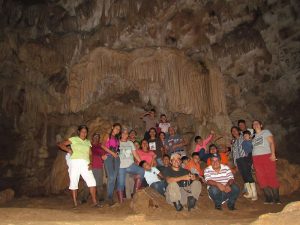 Tree climbing and caving are BiodiverCity favorites! We support ethical exploration using equipment and techniques that respect the tree and cave life and secure human lives.
Tree climbing and caving are BiodiverCity favorites! We support ethical exploration using equipment and techniques that respect the tree and cave life and secure human lives.
Exploration is performed by photographing and recording the species that live high in the treetops and deep underground.
By entering these two sacred spaces, we get new knowledge, understanding and respect for what it means and what it takes to be part of this complex ecosystem.
